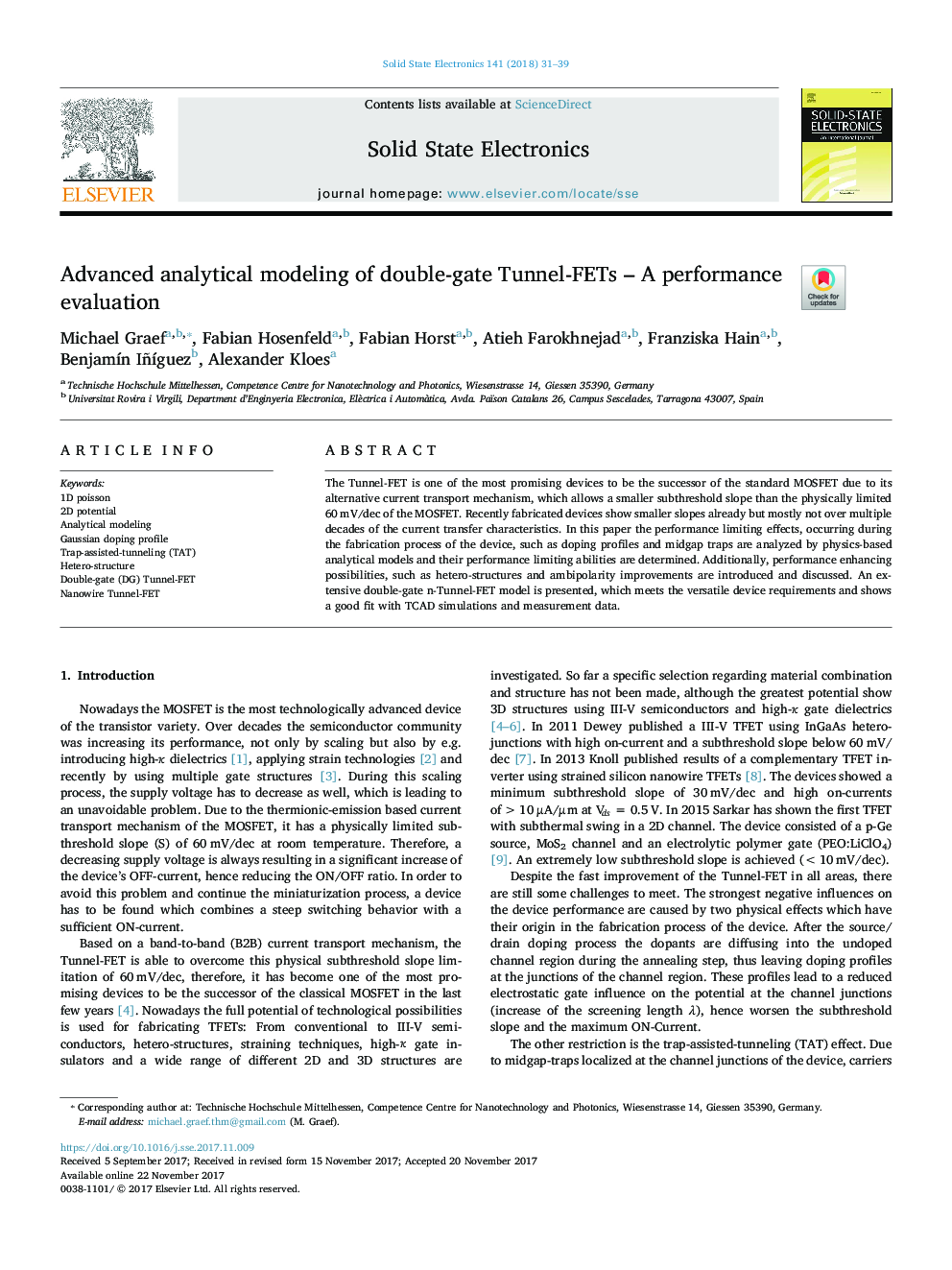| Article ID | Journal | Published Year | Pages | File Type |
|---|---|---|---|---|
| 7150459 | Solid-State Electronics | 2018 | 9 Pages |
Abstract
The Tunnel-FET is one of the most promising devices to be the successor of the standard MOSFET due to its alternative current transport mechanism, which allows a smaller subthreshold slope than the physically limited 60â¯mV/dec of the MOSFET. Recently fabricated devices show smaller slopes already but mostly not over multiple decades of the current transfer characteristics. In this paper the performance limiting effects, occurring during the fabrication process of the device, such as doping profiles and midgap traps are analyzed by physics-based analytical models and their performance limiting abilities are determined. Additionally, performance enhancing possibilities, such as hetero-structures and ambipolarity improvements are introduced and discussed. An extensive double-gate n-Tunnel-FET model is presented, which meets the versatile device requirements and shows a good fit with TCAD simulations and measurement data.
Keywords
Related Topics
Physical Sciences and Engineering
Engineering
Electrical and Electronic Engineering
Authors
Michael Graef, Fabian Hosenfeld, Fabian Horst, Atieh Farokhnejad, Franziska Hain, BenjamÃn IñÃguez, Alexander Kloes,
